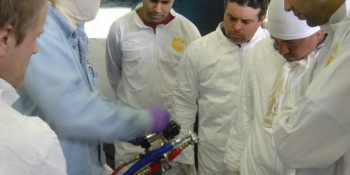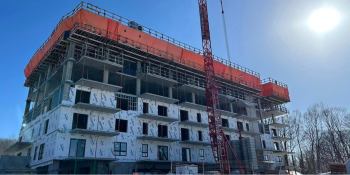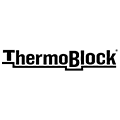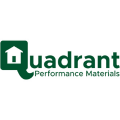Q&A Forums
Testing of R-Values & Questions on Foam Post New Topic | Post Reply
| Author | Comments |
|---|---|
|
William Gibson
Posted: Feb 04, 2009 09:55 AM
|
Testing of R-Values & Questions on Foam
Mason:We all know that R-Values of Foam are largely skewed in comparison to R-values of other insulations such as fiberglass or cellulose. However, as I try to sell the product I find myself lacking knowledge of how the actual R-Values are tested. I've heard perfect conditions at 75-degrees but don't follow the exact testing method. Can you answer some of the questions below? - In what conditions is an R-Value tested and finalized? - The finished R-Value of foam, I've heard is tested and found 180 days after installation of the foam. Is this true, if not how long before it is tested, and is it tested in the same conditions of the original R-Value? Does it fluctuate between manufacturers? - What type of testing does the EPA use to regulate Closed and Open Cell Foam. - In winter conditions the living space is 65-degrees Fahrenheit. At what outdoor temperature will 1.5", 3" and 4.5" of 2lb. Closed Cell Foam begin to lose heat to the outdoors? |
|
mason
Posted: Feb 05, 2009 08:51 AM
|
I have written a few articles on understanding R values. You can download one at my website, masonknowles.com that was published in Modern Materials Magazine. (The whole magazine is on the website so just scroll down.) I wrote the following article a few years ago and it addresses your questions. "Insulation R-value, What does it really mean? Every designer knows that the R-value of a material is important in specifying insulation products. Regulations abound that require minimum R-values for wall, ceiling and roof assemblies in buildings. But are R-values reliable in predicting energy performance? This article will address the test methods used to determine R-values and their relative degree of accuracy. What is an R-value? As most of you already know, we don’t really measure R-values, we measure the K-factor of a material. The K factor is the thermal conductivity for a unit thickness of material. The lower the K-factor the better the insulation. R-value is the reciprocal of K factor and reports the resistance to heat transfer of a given material. So once the researcher determines the K-factor, they divide the K-factor into 1 to obtain the R-value. Example: If the K-factor were 0.166, then the R-value would be 6.02. The higher the R-value the better the insulation Once you have an R-value of a material, it becomes much easier to determine the overall thermal conductance of the building assembly (U factor). In order to obtain the U factor, add the total R-values of the materials in an assembly then divide it into 1. How do you measure for K-factor and R-value? ASTM developed standards for the most commonly used insulation products including fiberglass, cellulose, polyiso board, expanded polystyrene foam, extruded polystyrene foam and spray polyurethane foam. Code bodies and governmental agencies most commonly require the test methods referenced in the material standards. There are 3 basic test methods used most frequently to measure R-value; • ASTM C 177 “Standard Test Method for Steady-State Heat Flux Measurements and Thermal Transmission Properties by Means of the Guarded –Hot-Plate Apparatus; • ASTM C 518, “Standard Test Method for Steady-State Heat Flux Measurements and Thermal Transmission Properties by Means of the Heat Flow Meter Apparatus;” • ASTM C 1363 “Standard Test Method for Thermal Performance of Building Assemblies by Means of a Calibrated Hot Box;” In addition to these tests, there is an ASTM Standard Test Method for estimating the long term R-value of foam insulation, ASTM C-1303. While the other test methods are actual measurements, ASTM C-1303 is an estimate that uses short-term measurements to predict R-values of foam plastics over a longer period of time. R-values reported from the tests can vary depending on how the samples were prepared, the thickness of the sample and the type of test apparatus. For example, when testing spray polyurethane foam (SPF) for its R-value according to ASTM C-1029 (Standard Specification for Spray Applied Cellular Polyurethane Insulation) both ASTM C-518 and ASTM C177 require a 12”x 12” x 1” sample cut from a sprayed board of foam. After aging the material 6 months in a controlled environment, the foam’s R-value is measured. The 6-month aged R-values are the measurements accepted by FTC and are used by a majority of the SPF industry. Typical aged SPF R-values from ASTM C-518 and C-177 range from 5.6 to 6.2 per inch. However, another test procedure, ASTM C-1363 consists of measuring the R-value of SPF installed in an 8’ x 8’ wall at the installed thickness. These tests typically provide higher R-values than ASTM C-518 or C-177 measurements for SPF thickness greater than 2 inches. Why? R-values of some foam plastics such as extruded polystyrene, polyiso and SPF can vary depending on the thickness of the foam and whether the foam is measured with or without being adhered to a substrate. Factors affecting the R-value include: thickness of application, (the thicker the foam the better the aged R-value) the substrate and covering systems used, (the lower the perm rated covering and substrate, the higher the aged R-value). Robert Alumbaugh, a researcher with the Navy studied the aged R-values (between 5 to 10 years) of SPF on test panels at the Naval Station in Port Hueneme, CA. According to Alumbaugh’s research SPF sprayed to a high perm rated substrate such as wood or concrete ranged from 5.8 to 6.2 R-value per inch at a 1 to 3-inch thickness, but the same SPF applied to metal decks ranged from 6.5 to 7.3 R-value per inch. Other researchers such as Mark Bomberg with the National Research Center of Canada and Andre Desjarlais with the Oak Ridge Laboratories, U.S. Department of Energy observed similar results. The type of blowing agent used can also affect the R-value, CFC, HCFC, HFC and hydrocarbon blown SPF range within the R-values described above, while water blown foams typically have much lower R-values. Blends of these blowing agents with water can also affect the R-value. Why don’t we settle on one test method that works for everyone? The problem with this solution is there is no one test that works best for all products. So we are left with the process of determining the test methods, sample preparation and conditioning procedures that are accurate, reproducible and relate to actual field performance of specific materials. It is not too difficult to find test methods that are accurate and reproducible, but to have one that relates to actual field performance is a challenge. Remember also that R-values only measure conduction of heat not radiation or convection. It also does not take into consideration R-value reductions caused by thermal bridging, humidity, temperature changes, air infiltration and wind. At present the typical approach to determine actual field performance is to start with the R-value from small sample testing, and using other test procedures determine the insulation efficiency reduction based on air infiltration, thermal bridging and other considerations. The results from these tests can vary widely depending on assumptions made. For example, in the 1980’s to 1990’s ASHRAE surveyed “typical” residential construction for air leakage using a blower door test. The results of their survey was published as a table in the ASHRAE’s Fundamentals Handbook and determined that the typical house had 1-1/2 air exchanges per hour. This would be the equivalent of having a two-inch hole in each of your 8’x 8’ wall assemblies. In moderate climates such as southern California or Hawaii, this might not be a significant factor, but in South Texas or Minnesota the air leakage would reduce the energy efficiency of any building considerably. However, Oakridge National Laboratories (ORNL) more recent survey concluded that the total air exchanges in new houses is closer to 0.32 air exchanges per hour which would be the equivalent of a 1/2" hole in the same 8’x8’ wall assembly. (ORNL attributes the tighter housing to improved construction techniques and sealing materials such as foam sealants and housewrap.) ASHRAE also publishes a table referenced in the 2003 International Energy Conservation Code that calculates the reduction of R-value based on thermal bridging. In roofing applications, thermal bridging (brought on by gaps in insulation boards, fasteners, etc. can reduce the R-value from 5% to 35% depending on the size of the gaps, type and number of fasteners. In conclusion, the tools to more accurately predict energy efficiency of building products and assemblies are getting better every day. But it is up to the designer to take advantage of these tools to ensure that the R-value required is being achieved in the design." SIDE BAR ASTM R-value Measurement Tests: ASTM C-177: Standard Test Method for Steady-State Heat Flux Measurements and Thermal Transmission Properties of the Guarded Hot Plate Apparatus. This test method measures the steady-state heat flux through homogeneous flat specimens. Two test specimens (as identical as possible) are placed on both sides of a “guarded” hot plate and in contact on the other side with a “cold surface assembly”. Compliance with this test requires the establishment of steady-state conditions (same temperature across the assembly) and the measurement of the heat flow in one direction. The apparatus is called “guarded” because it is insulated on the edges to minimize or prevent lateral heat flow, which would corrupt the results. Cold Surface Assembly Specimen ----Guard---- ---Hot Plate-- --Guard-- Specimen Cold Surface Assembly ASTM C-518: Standard Test Method for Steady-State Thermal Transmission Properties by Means of the Heat Flow Meter Apparatus This test method covers the measurement of steady-state thermal transmission through flat slab specimens using a heat flow meter. One test specimen is placed between a cold plate and a hot plate. One or more heat flux transducers can be used. Example 1 Cold Plate Specimen Heat Flux Transducer Hot Plate Example 2 Hot Plate Specimen Heat Flux Transducer Specimen Cold Plate Example 3 Cold Plate Heat Flux Transducer Specimen Heat Flux Transducer Hot Plate ASTM C-1363 : Standard Test Method for Thermal Performance of Building Assemblies by Means of a Calibrated Hot Box. The test method provides for laboratory measurement of heat transfer through a specimen under controlled air temperature, air velocity and radiation conditions established in a metering chamber on one side and in a climatic chamber on the other side. The calibrated hotbox method is specially suited for large non-homogeneous specimens such as building structures and composite assemblies. It can also be used for measurements of individual building elements such as windows and doors. The chamber can be configured for wall assemblies or attics and floors. ASTM C-1303: Standard Test Method for Estimating the Long-Term Change in the Thermal Resistance of Unfaced Rigid Closed Cell Plastic Foams by Slicing and Scaling Under Controlled Laboratory Conditions. The test method covers a procedure for estimating long-term change in thermal resistance of un-faced foam plastic, by reducing the thickness of the sample to accelerate aging under controlled laboratory conditions. Standard test procedures such as ASTM C-177 and ASTM C-518 are utilized to measure the thermal resistance of thin sliced test specimens at short time intervals (up to 6 months). These measurements are then used to estimate the predicted aged R-value of materials for longer time intervals (typically 2.5 to 40 years). It should be noted that this test method is an estimate and not a true measurement. Some products such as polyiso board with facers and SPF may not be appropriate for ASTM C-1303 estimates due to their non-homogenic nature and adherence to facers or substrates. |





























